How to Make Homemade Chicken Stock
Making homemade chicken stock is the number one thing you can do to not only make tastier, healthier food, but it also saves you a lot of money.
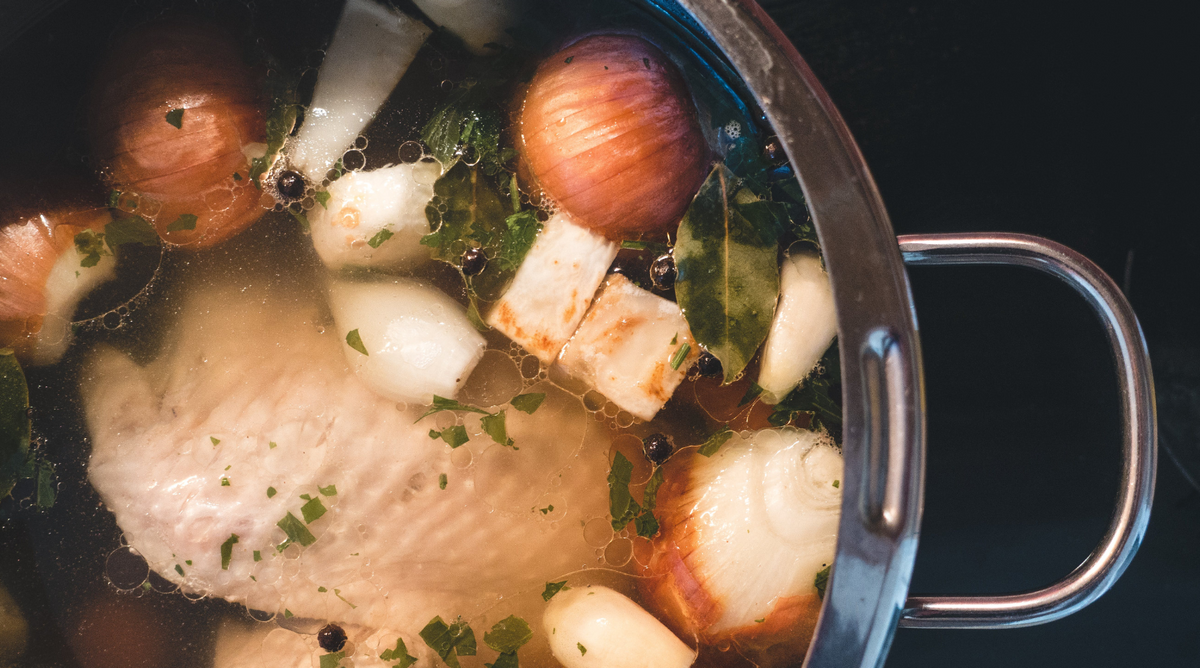
Making homemade chicken stock is the number one thing you can do to make healthier food. It also saves a lot of money.
Why Make Homemade Chicken Stock?
Why make homemade chicken stock? Three reasons: flavor, nutrition and economy.
1. Flavor: Chicken Stock Makes Food Taste Better
These days many (most?) processed and restaurant foods are flavored with MSG. MSG is a neurotoxin. I personally cannot stand MSG because it makes me tired and gives me cottonmouth.
Traditionally, our food was always flavored with bone broth, also known as stock — beef stock, fish stock or poultry stock. By adding bone broth to your meals, you will naturally enhance the flavor without the toxic additives.
2. Nutrition: Chicken Stock Provides Valuable Nutrients
Nutritionally, there are so many reasons to use bone broths in your cooking. This is why they call it Jewish penicillin. We should all be getting more collagen.
For those with digestive ails and food allergies and intolerances, bone broth is the very best thing you can to do help heal your gut.
3. Economy: Chicken Stock Helps You Stretch Your Food Dollar
Another reason to make your own stock is it saves money!
It is a heck of a lot cheaper to buy whole chickens or ducks, roast them for dinner, eat the leftover meat in sandwiches or curries or soups, and then use the bones for stock.
Oh, sure you could buy chicken stock from the store. And there are a few brands that are OK. But most of the chicken stock you find in the store is made from battery chickens (over 90% of the chickens sold in the US come from factory farms). I don’t know about you but I prefer my chicken broth without antibiotics, synthetic hormones, and genetically modified organisms. I’m just sayin’…
Even if you get organic chicken stock from the store, it's not as nutrient-dense as homemade stock. This is because most chicken stock you get in the store only simmers for less than an hour.
I know this because I asked food manufacturers when I used to go to the Natural Products Expo.
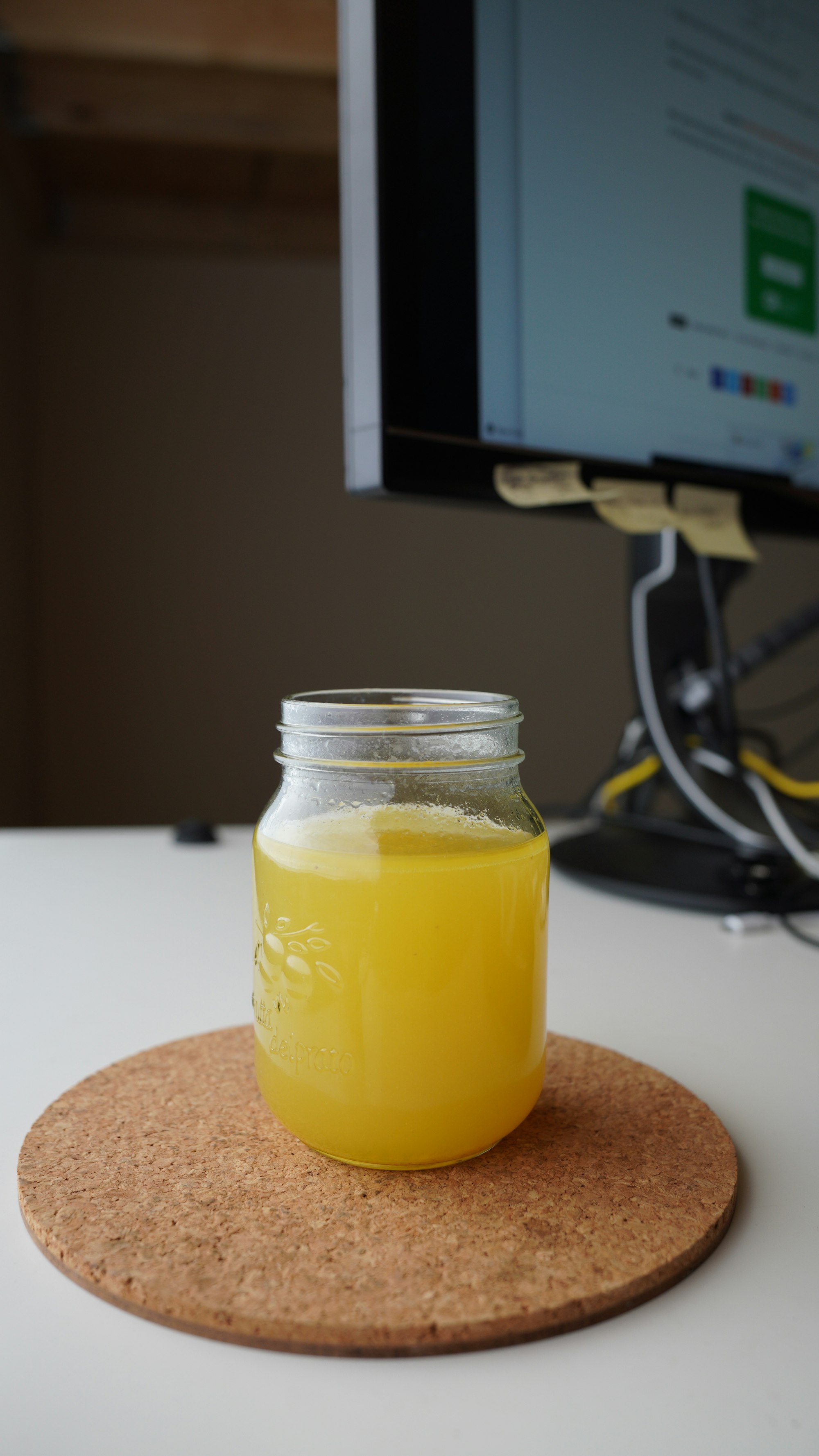
Don't Think You Have Time To Make Chicken Stock?
You do! It takes a minute to throw leftover bones into a Ziploc and store in the freezer. It takes ten minutes to chop up some carrots and celery and get a pot of stock going. And it takes ten minutes more to strain it. Maybe five minutes more to pour it into ice cube trays and freeze it.
Do this every week and you’ve spent less than 30 minutes on making stock — which will boost the nutrition and flavor of countless meals.
And you’ve massively stretched your family’s food budget. I use it for cooking all my beans, rice, risotto, soups and stews and chili, and making sauces.
If you work outside the home and/or are away a lot, invest in a good crock pot, Instant Pot, or Vital Clay pot. You can leave it simmering on the counter all day without worrying about starting the house on fire.
You can’t afford not to make the time to cook homemade stock.
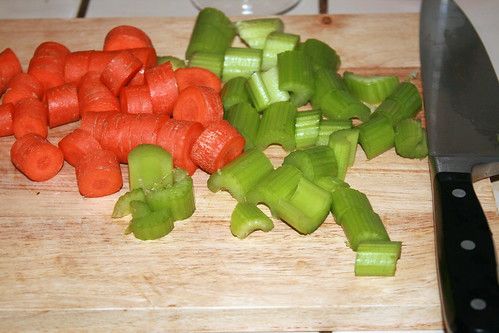
Recipe Notes
Use Organic Chickens Only
It is imperative that you only use organic chickens. Fluoride is stored in the bones of animals and most pesticide used today contains a lot of fluoride. So when you make stock with conventional chicken bones, you will be making a liquid that is HIGHLY concentrated in fluoride. Yuck! Toxic. Avoid!
It best to use farm-raised, pastured birds. This means not just “cage-free” (not in a cage but still inside) but birds that have freedom to roam OUTDOORS, and get vitamin D from sunlight and protein from the bugs they eat.
Also, if you can find a farmer who does not feed soy to his or her chickens, that is ideal. If they do feed soy, make sure it is organic (you do not want to eat chickens that have eaten genetically modified soy).
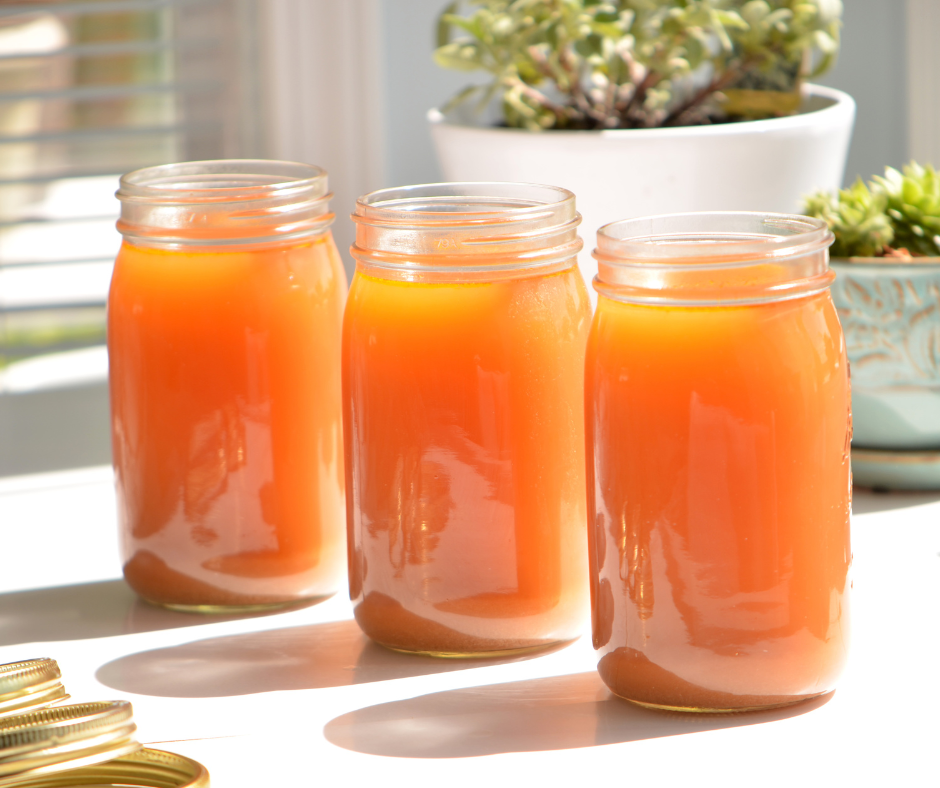
Use Filtered Water Only
Do not use tap water. Only use spring water or filtered water. Make sure you filter out fluoride.
Ideally, use filtered water that is high in silica. Here's my recipe for silica water. It's easy!
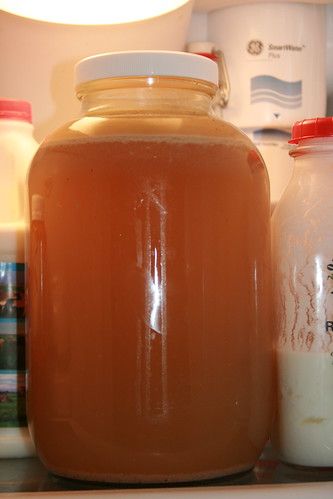
Chicken Feet & Gizzards: Use 'Em if You Got 'Em
The gizzards and chicken feet are optional. However, I highly recommend getting your hands on some chicken feet if you can. Make sure they are from chickens eating organic feed.
How Long To Cook Chicken Stock
The longer you cook the stock, the more flavor and nutrition it will have. This is the main reason I don't recommend store-bought chicken stock.
How long to cook stock depends on the size of the bones. I usually cook my chicken stock for 4 hours. I do my beef stock for 8 hours. Fish stock can be simmered for only 30 minutes to 2 hours.
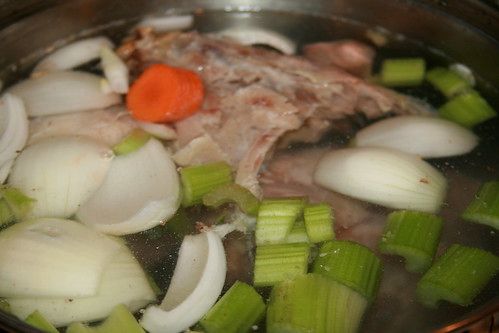
Homemade Chicken Stock Recipe
Ingredients
Chicken parts & bones – 2-4 pounds (necks and leftover bones — you can also use bones from ducks, turkeys, geese, or Cornish game hens)
Gizzards (optional)
Chicken feet, 2-4 (optional)
Filtered or spring water – 4 quarts
Vinegar, white or apple cider vinegar – 2 tablespoons
Onion, large yellow or white – 1
Carrots – 2
Celery stalks – 3
Equipment
Stock pot (enamel or stainless steel — not aluminum) — where to buy stock pot
2-gallon glass jar – or you can use mason jars
Mesh strainer
Slotted spoon
Instructions
1. Place chicken (or duck, goose, turkey, or Cornish game hen) parts and bones into stock pot with water, vinegar and all vegetables.
2. Bring to a boil, and remove any scum that rises to the top (I find that there is almost no scum when I am using pastured birds).
3. Reduce heat, cover and simmer for a minimum of 2 hours.
4. Remove bones and vegetables with a slotted spoon. Discard. (Some people grind them up and use them in pet food.)
5. Strain the stock into the 2-gallon glass jar (or smaller mason jars) and let cool to touch on the counter. You can also use large glass bowls but I have found that they take up far too much valuable space in the fridge. If you want a clear stock (with no bits & pieces), use some cheesecloth in your strainer. I usually cannot be bothered with this.
6. Store in the refrigerator for a few hours or overnight, until the fat rises to the top and congeals.
7. Store the broth in glass jars in the fridge. They will keep in the fridge for 1-2 weeks, or longer, depending on how thick the fat layer is on top. When ready to use, skim off the fat with a spoon and discard in the trash, or store it in your fridge or freezer to use chicken fat in cooking (nothing wasted!).
8. For longer term storage, Pour the stock into ice cube trays and freeze. When ready to use, pop the cubes out of the trays and store in Ziploc bags or Tupperware in your freezer. Now you have 1-ounce cubes of stock, pre-measured and ready for any recipe.
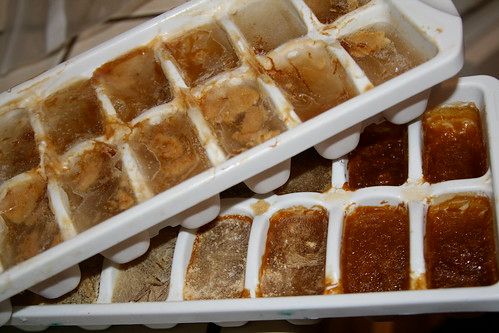
Pin This Post
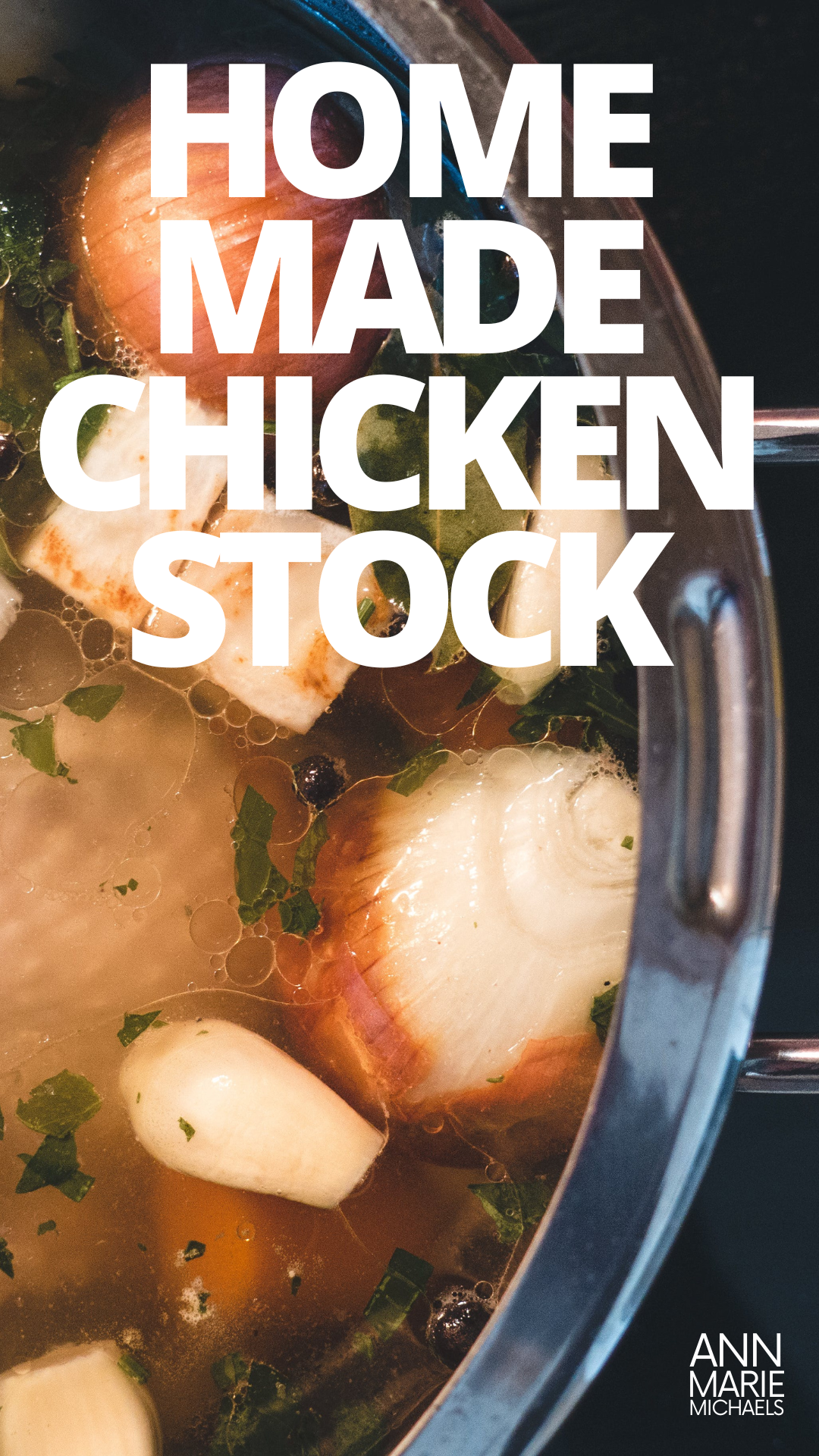



Comments ()